In this ultimate guide, I share everything you need to know for how to travel India on a budget, where to go and how to get there, and how to have a safe and pleasant journey.
Backpacking India is the absolute best way to get up close and personal to the country’s vibrant culture, interesting history, and fantastic food.
But I’m not going to sugar coat it – backpacking India was tough. It was uncomfortable, it was really dirty, and I definitely got sick from the food more than once.
Discomfort aside, it was honestly one of the most exhilarating and eye-opening experiences of my life. And no joke, before I even left India I was already making mental plans for what I wanted to see and do when I one day returned.
If you’re planning a long backpacking trip to India, whether for two months, one month, or even just two weeks, this ultimate guide to backpacking India can help you in your upcoming adventure, even if you’re on a budget. Especially if it’s your first time in India!
Backpacking India Guide Contents
Cost to Travel in India
Best Time to Visit India
Backpacking India Routes
Two Months in India
Best Places to Visit in India
Bucket List Experiences to Have in India
Important Travel Tips
Is India Safe for Women?
This post may contain affiliate links, meaning at no additional cost to you, if you click my links and make a purchase, I may earn a small commission. Learn more on my disclosure page. Thank you for your support!

What does it cost to travel in India?
India Daily Budget: $30 – $50+/day
First things first, let’s talk money. How much does it cost to travel India on a budget? If you’re looking to get super shoestring, it’s possible to spend as little as about 1,700 rupees or $25/day* in India. How do I know? Because that’s exactly what I spent!
By sleeping in super cheap hostels (think $1-$5/night), eating most meals on the streets ($0.50/meal is common), and by walking or taking buses to get around versus private taxis, we were able to save a ton of money. I also avoided buying souvenirs and alcohol in excess.
I know not everyone is willing to travel on such a tight budget, so I actually recommend a daily budget of around $30 – $50 per day, if not a little more. Especially if you plan to fly in the country between destinations or want to stay in more luxurious accommodation, and also to have a bit of padding should anything come up.
The $25/day I spent in India doesn’t include my flight, because the cost of your flight to India will be so different from mine depending on where you’re coming from and when you book.
But for those curious, my flight from Chicago to Mumbai was $665, and I used some of my points from my Chase Sapphire Preferred credit card to get the price down to $515.
Breakdown of my travel costs in India: $1,163.63 / 84,954.50 INR for 51 Days
| Accom: $150.28 / 10,992.75 INR (average $3/night) | Food: $334.12 / 24,418.57 INR (a lot of street food + coffee) |
| Transport: $163.48 / 11,834.85 INR (trains, buses, tuk tuks, 1 domestic flight) | Attractions: $161.89 / 11,853 INR (budget hostels) |
| Misc: $72.14 / 5,282 INR (hospital visit, check-up, unexpected) | Entertainment: $16.20 / 1,186 INR / (palmist, Holi Hai, henna) |
| Souvenirs: $74.90 / 5,430 INR (clothes pretty much and gifts for others) | Laundry: $12.54 / 918.50 INR |
| Hiking: $149.08 / 10,915 INR (trek fees that included meals and accom) | Alcohol: $29.01/ 2,123.83 INR (causual drinks/beer) |
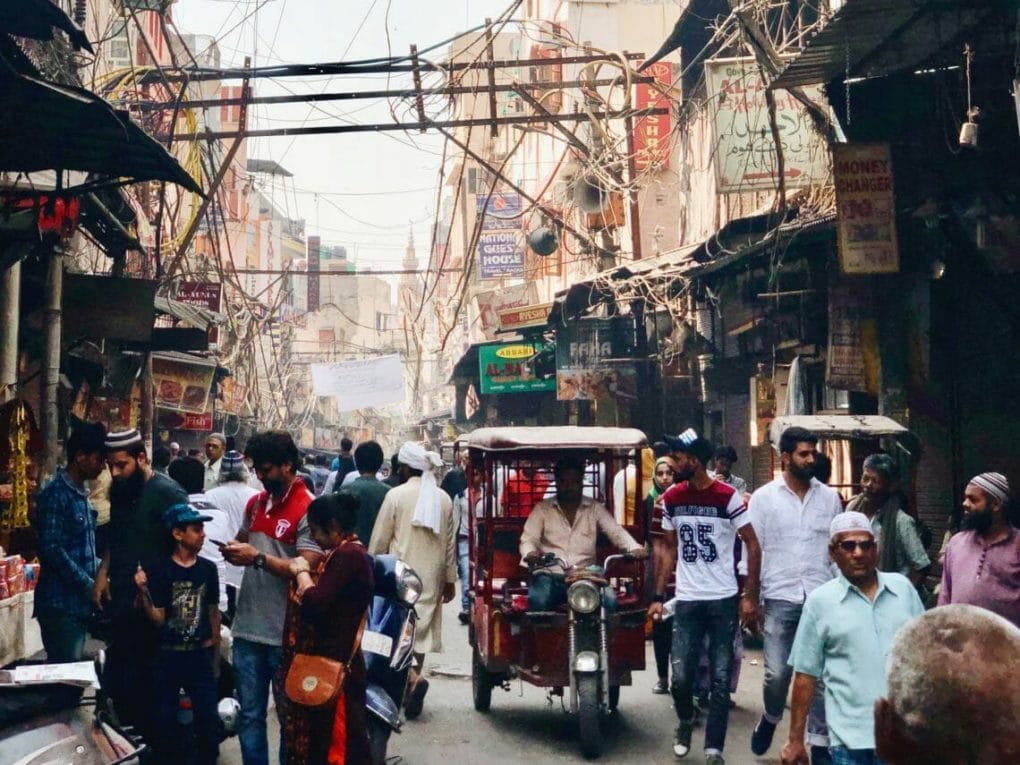
When is the Best time to Visit India?
The best time to visit India is during the cool, dry season which is between November to March. Summer starts to get going in the south (like Goa) pretty quickly and any later than March will be very hot and very humid. From April onwards is monsoon or rainy season for most of the continent.
In the mountainous north, the snow doesn’t start to melt until April or May, and if you’re there any sooner you may find road closures due to the snow. That means hiking season is usually in full swing by the end of May. I was in India in March and April, and it certainly was hot already in places like Mumbai, Rajasthan and New Delhi. Our time in the north like Kasol and Manali was cool but comfortable.
Best Backpacking Routes in India
India is a massive country, which means there are an infinite number of ways to plan an itinerary. I won’t bore you with the insanely descriptive details, but here are a few of the most common India travel routes in the backpacking circuit to get your planning juices flowing.
It’s also worth noting that the timings I’ve provided here are an estimate and the destinations are to give you an idea of the best places to see in each region. I recommend writing out your desired plans and looking into transportation (because transportation is SLOW in India) when budgeting your time.
India’s Golden Triangle: 3 days – 1 week
New Delhi, Agra, Jaipur
The Golden Triangle is the route between New Delhi, Agra, Jaipur, and back to New Delhi. It’s probably one of the most common and convenient routes in India for tourists because the bulk of flights land in New Delhi and it can easily be done in 3-5 days.
This route is aptly named not only because these three cities form a solid triangle on the map, but it also covers some of India’s most famous attractions including; Delhi’s Red Fort, Agra’s Taj Mahal, and Jaipur’s Hawa Mahal and City Palace – to name a few.
This is just a basic rundown of the Golden Triangle Route, but if you have more than five days to spare in India, you can easily customize this to add other nearby destinations – of which I recommend Pushkar, Jodhpur, or Jaisalmer.
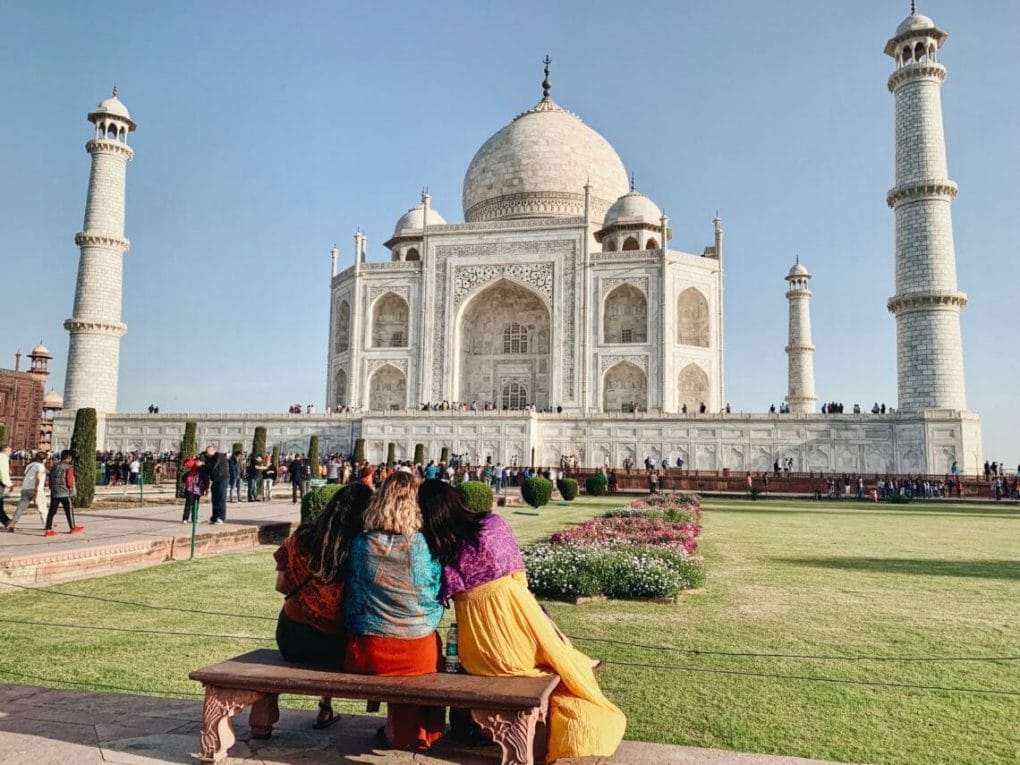
The Classics of India Itinerary: 2+ weeks
New Delhi, Agra, Jaipur, Udaipur, Jodhpur, Varanasi
Obviously everyone’s idea of “classic” India will vary, and it’s truly impossible to get a sense of this huge and culturally diverse place in just two weeks. BUT IMHO the “classic” destinations to see in India include the Golden Triangle (New Delhi, Agra, Jaipur), the other big cities in Rajasthan (Udaipur, Jodhpur), and Varanasi if you have the time.
These destinations are home to some pretty important and spiritual landmarks in India. They’re also each very different from one another and provide a good glimpse into how diverse India truly is.
However, I think to properly enjoy yourself and see all of these places (especially Varanasi, as it’s a hike from Delhi), you’ll probably need more than two weeks.
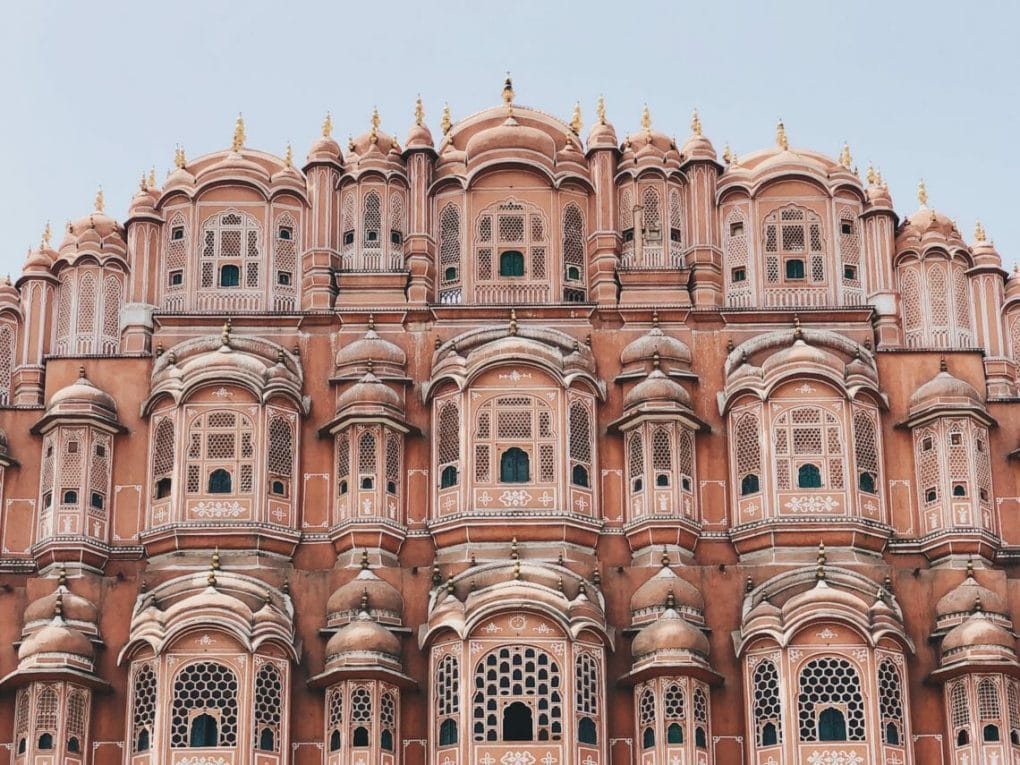
Southern India Itinerary: 1 – 2+ weeks
Mumbai, Goa, Hampi, Kerala, Mysore
In the south you’ll find the best party city in India (well actually the only ‘crazy’ party city as many holy places in India are dry). Planning a southern itinerary will vary on your preferences and what you wish to do and see. You could easily spend an entire week in Goa alone, relaxing on the sandy beaches and partying it up with fellow backpackers.
If parties aren’t your thing, I recommend venturing off to places like Hampi, Kerala, Mysore and Chennai to see some epic ruins, stunning nature, and beautiful attractions. You’ll certainly need two or more weeks to see every destination I’ve listed.
Some of the best things to do in southern India include: the beaches of Goa, Mysore Palace, temples in Hampi, Periyar National Park, etc. for a trip to southern India, I recommend flying into Mumbai instead of New Delhi.
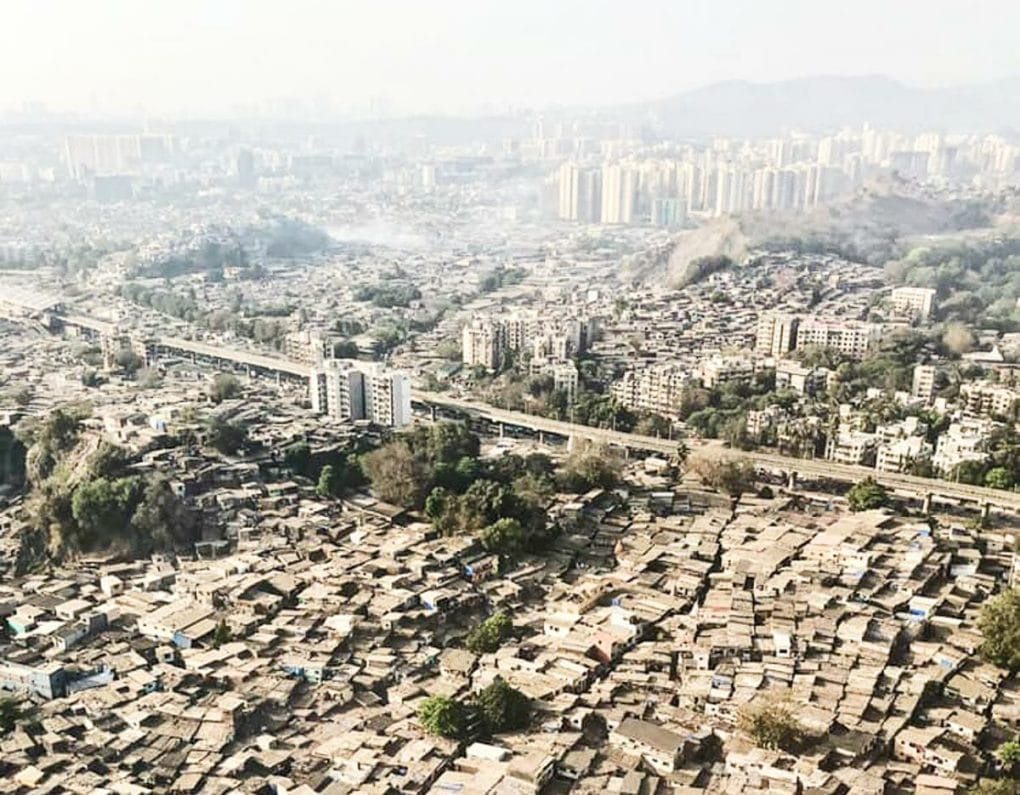
Northern India Itinerary: 1 – 2+ weeks
Rishikesh, Mcleod Ganj, Manali, Kasol, Leh
For mountains, yoga, and cooler temps, you’ll want to venture to northern India. From here you can trek through the Himalayan Mountains and experience a yoga retreat. It’s also in the north you get a taste of Tibetan culture.
The best way to venture north is via overnight train or bus from New Delhi. Some of the best attractions in northern India include; Himachal Pradesh, The Beatles Ashram in Rishikesh, the Kheerghanga Trek in Kasol, the overall chill vibes in Manali (I LOVED Manali), and dramatic landscapes of Leh.

Two Months in India Itinerary
If at all possible, I highly recommend visiting India for as long as you can. I spent approximately 7 weeks in India and left feeling that I missed so much!
To give you an idea of the possibilities, here’s how I spent my (nearly) 2 months in India focused on Rajasthan, Varanasi, and the north:
- 3 days in Mumbai
- 2 days in Udaipur
- 2 days in Bundi
- 3 days in Mathura (Holi)
- 1 day in Agra
- 3 days in Jaipur
- 2 days in Pushkar
- 2 days in Jodhpur
- 5 days in Jaisalmer
- 3 days in New Delhi
- 7 days Brahmatal Trek
- 4 days Varanasi
- 3 days Rishikesh
- 4 days Manali
- 5 days Kasol
- ~2 days for travel
If you can’t tell, near the end of the trip we were starting to feel a bit tired so began spending more time in single places. We were also fortunate to be visiting during the insanely colorful Holi festival, which is why this itinerary lists Mathura! I don’t recommend this city otherwise.
Some notes about my particular two month India itinerary – you truly don’t need more than 24 hours in Agra, I recommend more time in Udaipur, and it’s a good idea to budget “unplanned” time for spur of the moment trips that are sure to pop up during your backpacking trip.
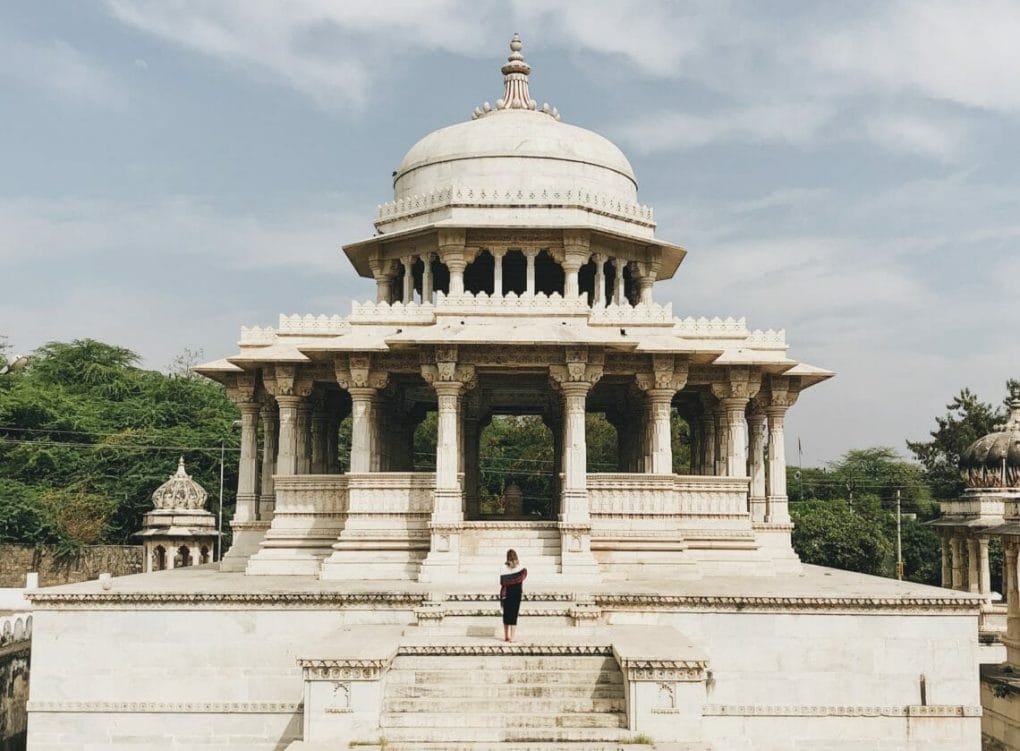
The 20 Best Places to Visit in India
Here’s a quick list of the best places to visit in India! I’ve listed the cities from south to north, and this should help you plan your own perfect India itinerary.
1. Kerala
2. Mysore
3. Bangalore
4. Goa
5. Mumbai
6. Udaipur
7. Bundi
8. Jaisalmer
9. Pushkar
10. Jaipur
11. Agra
12. New Delhi
13. Varanasi
14. Rishikesh
15. Mcleod Ganj
16. Manali
17. Amritsar
18. Kasol
19. Leh
20. Ladhek
↠ Read More: 27 Best Places to Visit in India for a Wonderful Adventure
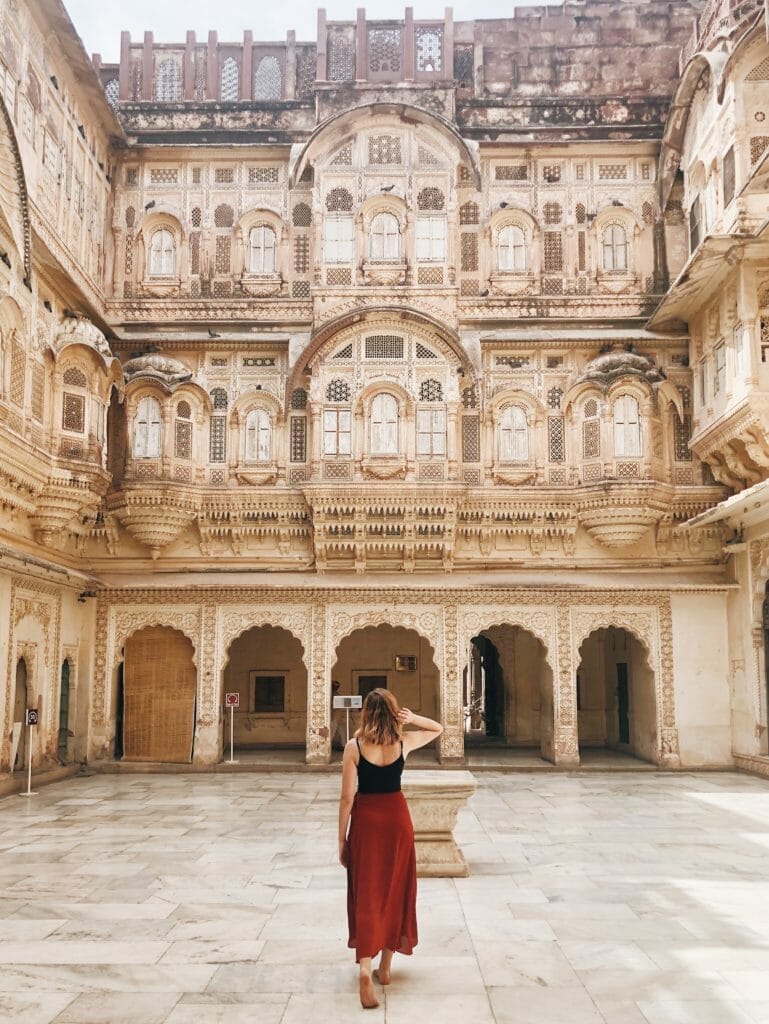
5 Epic Bucket List Experiences to Have in India
It’s all well and good to know how much it costs to travel in India and where to go, but what about those super special experiences you can only have in a new place? I’m all about those! Check out these super cool bucket list worthy experiences to have in India.
1. Experience the colors of the Holi Festival
Holi is the Hindu “festival of spring” that takes place usually in March or April depending on the year. In celebration, people visit temples, wear flowers around their necks, and throw colorful powder.
Holi is celebrated in many cities around the country in varying degrees and in different ways. The small villages of Mathura and Vrindavan are regarded as two of the holiest and most ‘authentic’ places to celebrate Holi so we took the time to go there.
We found that the celebrations on the street were mostly made up of men, as not many women feel comfortable in the middle of the chaos (as shared to us by some local ladies!) However, tourists can celebrate Holi pretty much anywhere and it may even be a safer and more enjoyable time elsewhere.
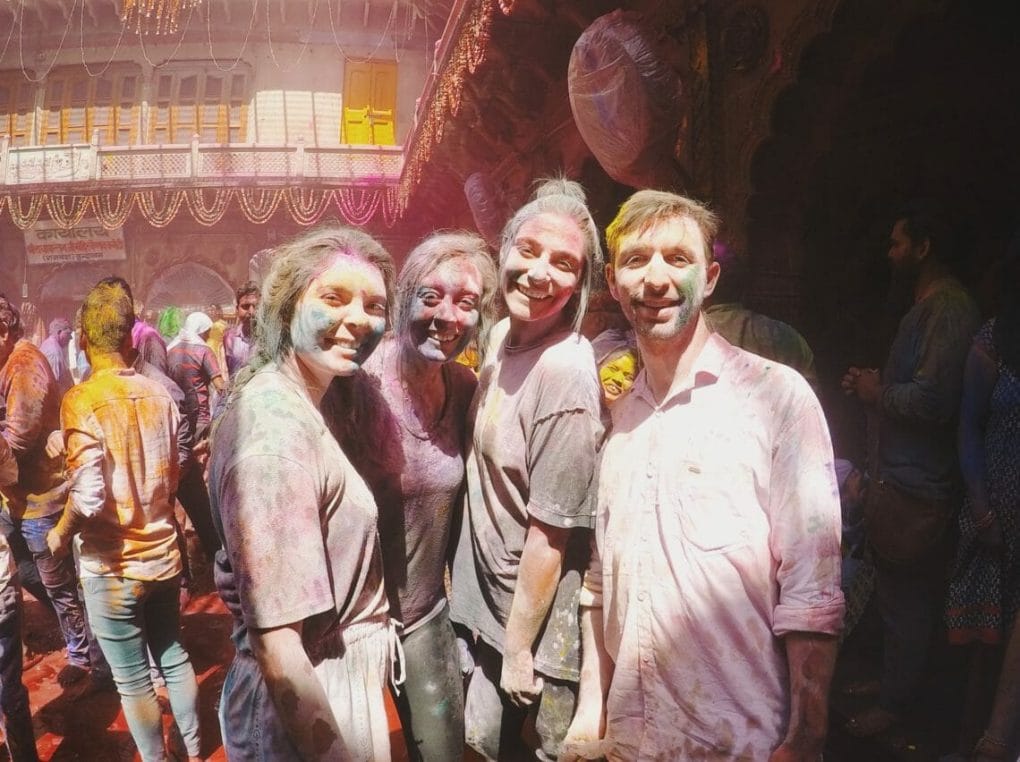
2. Sleep in the desert under the stars
Another bucket list experience is to ride a camel out into the desert to sleep under the stars, and Jaisalmer is the place to do so. Sleeping in the sand dunes was really fun and there was such little light pollution that we could see millions of stars.
We opted for a two night, three day tour, but there are various packages for those who wish to do a shorter or longer trip. You can book your desert tours with most guesthouses or easily once you’re in town.
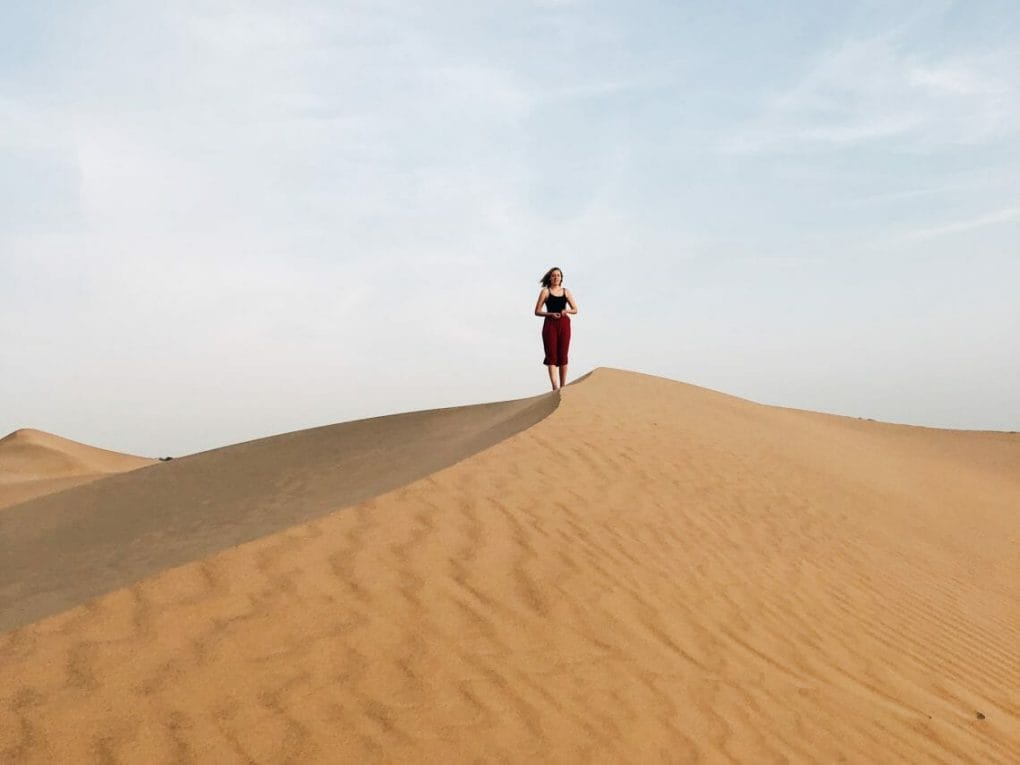
3. Bathe in natural hot springs
India is home to multiple natural hot springs – and many are regarded as sacred. There are a few different springs scattered around the country, but most seem to be in the north.
Below is a snap from our trip to the holy natural hot springs of Kheerganga, which can only be reached via a scenic 7.5 mile / 12 km trek (one way). After our hike, we set up camp for the night and soothed our tired muscles in these hot hot waters. It was a magical experience!
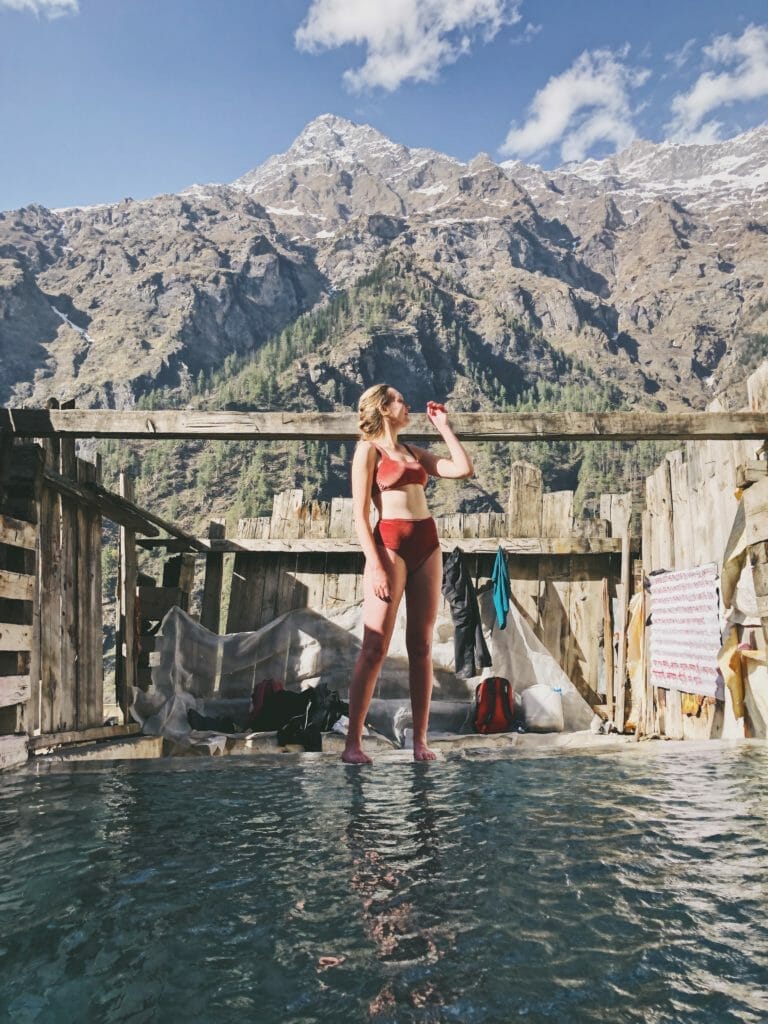
4. Sign up for a yoga or silent meditation retreat
Yoga originated in India over 5,000 years ago, so it only makes sense that doing yoga in its birthplace would be an incredible experience! If you’re a yogi or just want to give it a try, Rishikesh is the place to go for one off yoga classes or longer retreats.
If you’re feeling spicy, India is also the place to be for multi-day silent meditation retreats. These experiences usually entail multiple days of complete silence and little to no phone use. These retreats are most common in Rishikesh and Bangalore.
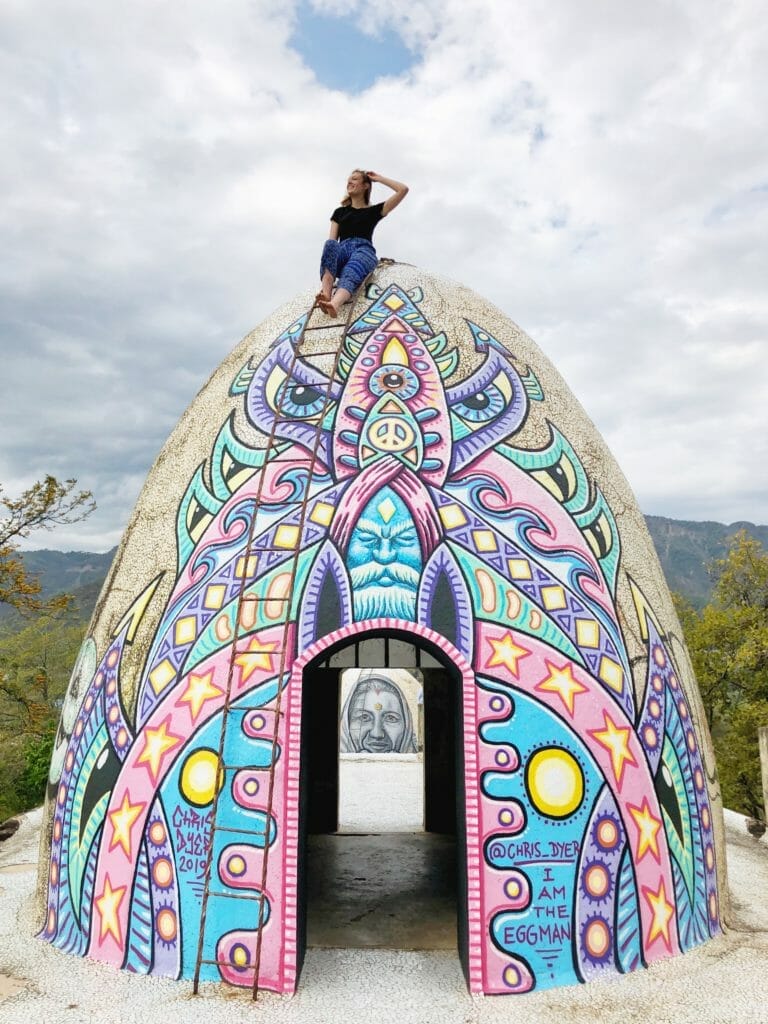
5. Go on a wildlife safari
India is also home to diverse wildlife that’s best appreciated on an organized safari tour! These tours take visitors through national parks and preserves in hopes of seeing wild animals like elephants, tigers, peacocks, and more. These tours can typically be booked for a half a day or a full day.
However, please avoid any type of unethical animal tourism. Attractions that have animals living in captivity to show off, give rides, or to pet/take photos with is cruel and unkind to the animals. A wildlife safari is the most ethical way to see exotic animals because you are simply observing them from afar in their natural habitat.
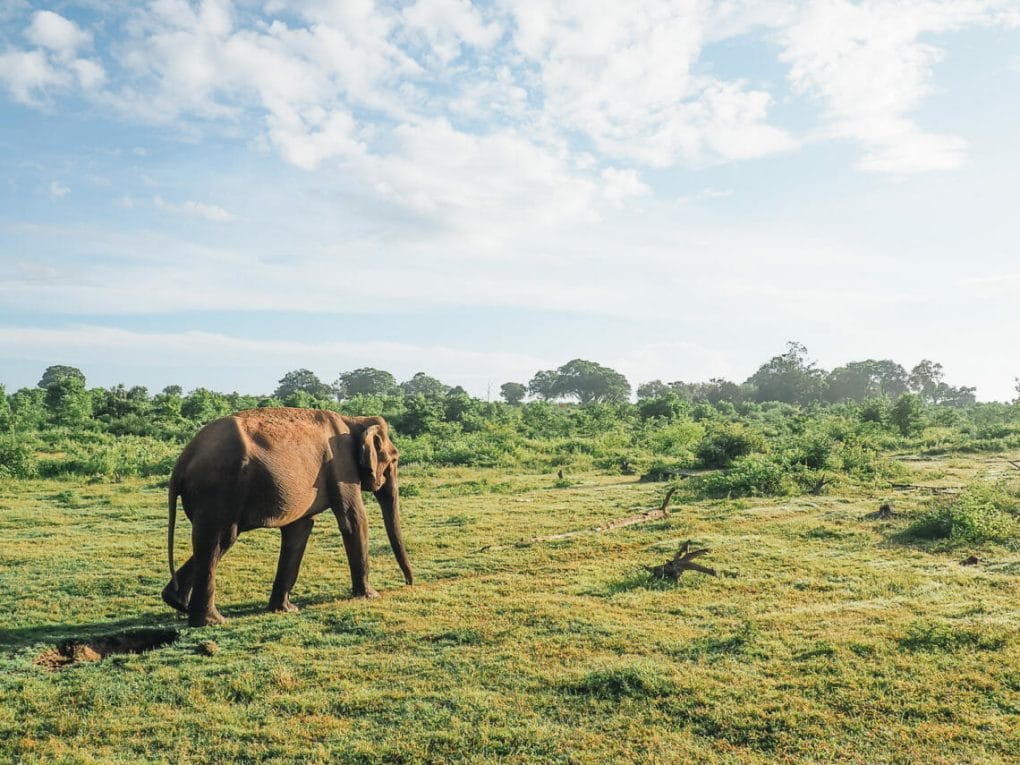
Budget Travel Tips for India
These India travel tips helped me save money and travel India on a shoestring budget!
- Use a budgeting app to keep track of your active spending. It allows you to keep track of every single purchase and to categorize them too. With Trail Wallet, I knew exactly what I was spending so I could stick to my budget.
- Eat street food and at local restaurants. It’s the cheapest you can get in India. Street food in India will usually run you from anywhere between 30 – 50+ rupees which is less than a full US dollar, whereas western food will be waaaay more expensive.
- Sleep in hostels! There were some nights we weren’t spending more than $2/night for a bunk bed. Many of the hostels in India were pretty decent too! I recommend Moustache or Zostel, which are a chain of clean and social hostels found throughout India and can be booked on Booking.com.
- Take the state buses or sleeper class trains for cheap and decently comfortable travel. If you’re really hardcore, jump aboard the general ticketing seats but prepare for chaos and to be smashed amongst hundreds of bodies (it’s not enjoyable). These are the cheapest modes of transportation in India.
- Walk everywhere and skip the
tuk tuk . Drivers overcharge foreigners an insane mark up compared to the local price. Or check out Uber / Ola for the best prices for local taxis and tuk tuks. Uber shows you the real price and not the foreigner mark-up you’ll find on the streets.
- Bring a portable water filter / LifeStraw to skip paying for water.
- Try to find travel buddies to explore India with to split the major costs; like transportation, or even meals as portions can be large in Indian restaurants
- Be on the lookout for tourist scams, especially the scams in New Delhi! Some taxi drivers or people may try to tell you “this landmark is closed, follow me” or “pay me for X”. Don’t listen to them, they’re scamming you.
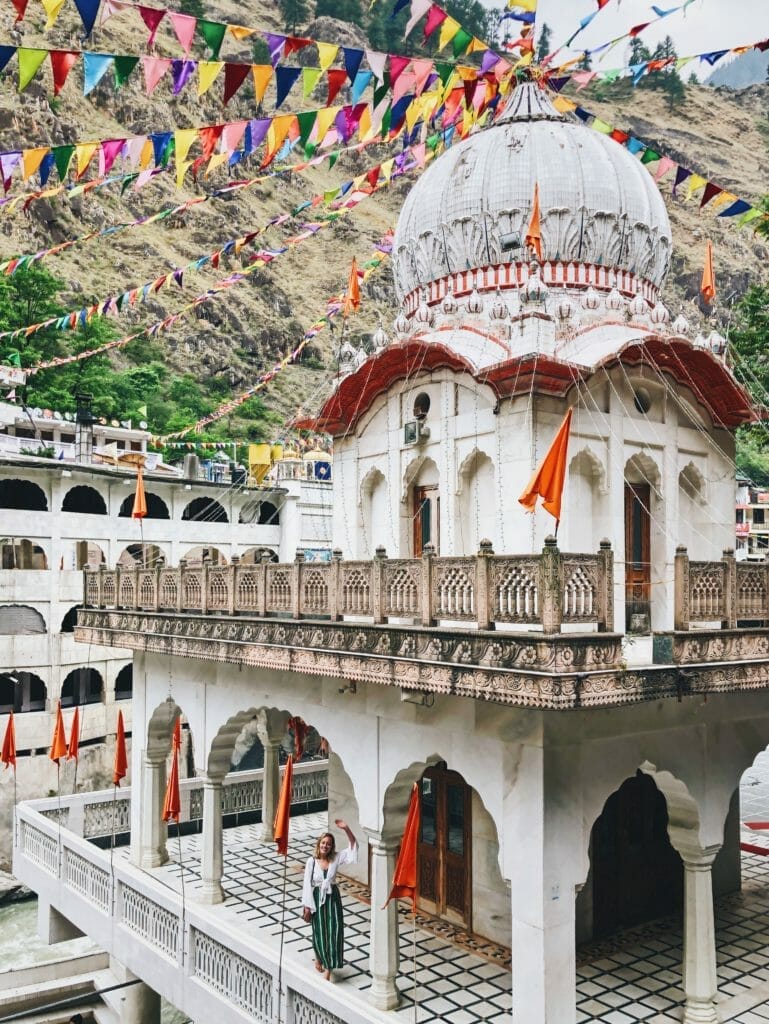
Is India Safe for Women?
Overall yes – India is safe for women. But, if you’re a women traveling to India, it’s very important to follow some safety tips and be on the alert more than you would another destination.
I’m not going to lie, in my group of three women and one man, we were harassed a few times during our trip. Some of the harassment was innocent, just people wanting to take pictures or chat with us because we looked different.
However, there were also unfortunately moments of sexual harassment too. Especially at the Holi festival where it quickly grew crowded, men attempted to grope me and my friends inappropriately. On a different day we also experienced indecent exposure from a man as we walked by.
That being said, I felt a lot more comfortable traveling in a group than I think I would have solo. But as bad as those moments were, they never escalated and I never felt out of control.
If you’re thinking of traveling solo in India, it’s certainly possible and I met a few solo traveling women while I was there (get it girls!). But if you’re an anxious person or get overwhelmed easily, traveling solo in India as a woman is not for the faint of heart. You will definitely get a lot of (mostly harmless) attention.
Here’s some tips to help your time in India as a women feel safer.
Solo Female Travel Tips for India
- This sucks to say, but women traveling in India should dress more conservatively. Carry a scarf to cover your shoulders when the stares get to be too much (you’ll also need it for temples and overnight sleeper trains). This packing list for India goes into deeper detail.
- Don’t go out after dark, especially alone.
- Don’t be afraid to act confident and to speak up. When a man grabbed my behind at the Holi Festival, I yelled “No, Stop” very loudly, over and over, and a group of people actually came to my defense to scold the other man. Make a scene.
- Trust your gut. If you’re uncomfortable for whatever reason, get yourself out of there and go back to the hostel/hotel.
- Not every place in India requires such alertness. In places like Rajasthan, Goa, Manali, Kasol and the north in general, I never felt uncomfortable. However in the big cities like New Delhi, Mumbai, and Agra, I definitely felt a little more uneasy.
- For LGBTQ+ travelers in India, be sure to read up on the cultural need-to-know things before you go. For example, showing same-sex affection in public is not recommended, but this linked guide goes into greater detail.
This post may contain affiliate links, meaning at no additional cost to you, if you click my links and make a purchase, I may earn a small commission. Learn more on my disclosure page. Thank you for your support!
Are you planning an India backpacking trip? Hit me up in the comments with any questions!! Safe travels 🙂


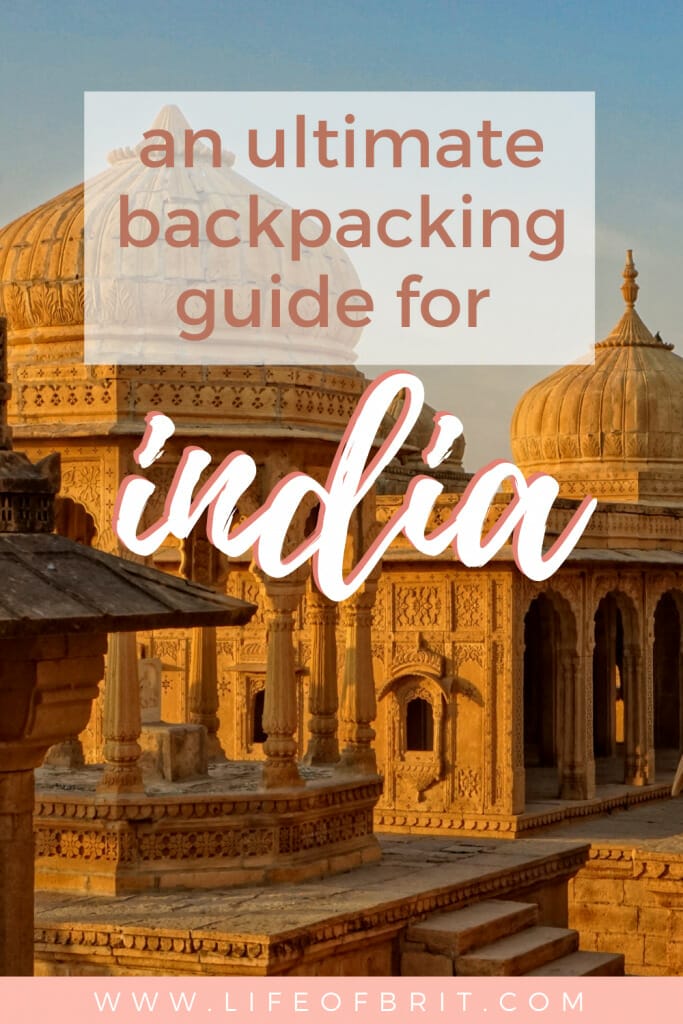

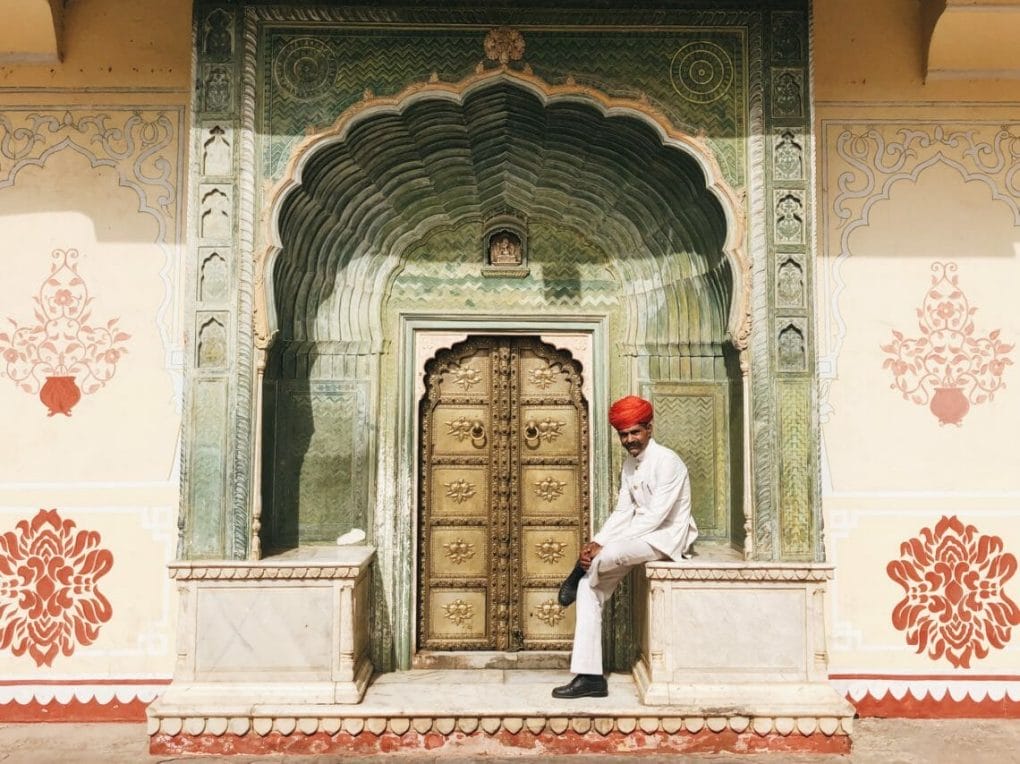
Hey Brit, this is such a beautiful and informative blog post. This would really help all travellers who are travelling to India on a budget, So thank you for sharing. P.S. love the images you have shared. Keep up the good work!!
Wow thank you so much!! ☺️☺️
Good to see that you managed to spend some time in the Himalayas. Of course you can’t cover everything in one trip but next time I suggest spare a few days for eastern and Northeastern India for a completely different experience.
The Himalayas were amazing!!! Yes definitely – I was bummed not to have enough time to get up there. Next time for sure ☺️
A very exciting blog that benefits travelers exploring budget travel trips.
Thank you so much for your kind words ☺️
Thank you for the informative and inclusive post!